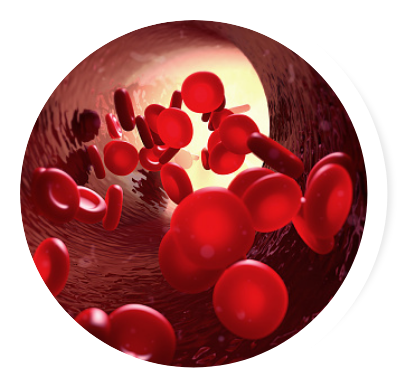Hemophilia A is a result of insufficient levels of factor VIII
Hemophilia is a bleeding disorder where blood does not clot properly. Hemophilia A, also known as classical hemophilia, is a genetic bleeding disorder caused by insufficient levels of a blood protein called factor VIII, a clotting factor. Clotting factors are proteins essential for proper blood clotting to stop bleeding.

The role of the X chromosome in producing factor VIII
A person’s genes provide the instructions on how to make proteins, such as factor VIII. In people with hemophilia A, there is a mutation (difference from normal) in the gene for factor VIII protein which causes the body to produce too little factor VIII.

The genes responsible for producing factor VIII are situated on the X chromosome. This makes hemophilia a sex-linked or X-linked genetic disorder.
The X chromosome is one of the two sex chromosomes in humans (the other is the Y chromosome).
The sex chromosomes form one of the 23 pairs of human chromosomes in each cell.
The X and Y chromosomes determine whether a person’s sex is male or female.
Approximately 70% of hemophilia A cases are inherited in an X-linked pattern. In the remaining 30%, cases occur spontaneously without a previous family history of the disorder.









X chromosome gene mutation
Females inherit an X chromosome from each parent (XX), whereas males always inherit their X chromosome from their mother and their Y chromosome from their father (XY).
Females who have a mutated gene present on only one of their X chromosomes are called heterozygous or a carrier for the disorder.
- They usually do not display symptoms of the disorder because they have another normal/healthy copy of the gene to compensate for the copy with the disease-causing mutation.
- Some females do have bleeding symptoms, but they are usually milder than those of males with hemophilia.
- In rare cases, a female who is heterozygous can have bleeding symptoms that are just as serious as those of a male with hemophilia.
There are no genes for clotting factors on the Y chromosome. Since males have only one X chromosome, if they inherit an X chromosome that contains a mutated gene, they will develop the disease.
Hemophilia A inheritance patterns
Inheritance patterns are used to describe how genetic variations are distributed through families. Looking at these patterns helps to predict disease risk in family members.
Use our hemophilia inheritance pattern tool to understand what might happen based on the genetics of a mother and father.
- Select from possible hemophilia traits in a mother and father to see what the chances are of the children inheriting the mutated gene that affects the creation of factor VIII.
- Try different combinations to see the different possibilities.
Tap to select a mother and a father Drag and drop to select a mother and a father
Mother

hemophilia alleles
(not a carrier) Heterozygous
(a carrier)
Father

hemophilia With
hemophilia

hemophilia alleles
(not a carrier) Heterozygous
(a carrier)
hemophilia alleles
(not a carrier) Heterozygous
(a carrier)
hemophilia With
hemophilia
hemophilia With
hemophilia
Adapted from the CDC and Hemophilia of Georgia.

Talk to your healthcare team if you are interested in genetic testing for Hemophilia A.

